
7 minute read
Yellow Bus History
120 Years
1920 - 2022
Advertisement


There are not many organisations that can claim 120 years of history these days but Bournemouth Transport Limited and its predecessors is a notable exception. The trading name may have changed several times over the years but it has survived two world wars, at least two pandemics about a hundred years apart and many other significant national and world events. In a brief article like this, it’s difficult to pinpoint which of the many highlights and significant events in the company’s history to mention, to try and encapsulate the last twelve decades. It is said that “a picture is worth a thousand words” and the photographs in this special commemorative feature , speaks for themselves, to a large extent. Perhaps a good start would be, chronologically, by starting with the trams, which operated from 1902 to 1936 (although the first motor bus service was as early as 1906!) and which were replaced by another form of electric traction, the trolleybuses from 1933 to 1969, fondly remembered by many residents and enthusiasts alike as ‘The Silent Service’. The last new trolleybuses for the UK were delivered to Bournemouth Corporation Transport in 1962, the year that the undertaking celebrated its Diamond Jubilee, half its lifetime ago! Twenty two staff are recorded on a memorial plaque, entitled ‘1914 IN MEMORIAM’ 1918’, displayed on company premises, as having given their lives, during the First World War. An express bus service was introduced as early as 1930! Then in 1931, route numbers were introduced for motor buses. In 1940, thirty trolleybuses were loaned to London Transport and other operators to help with the war effort. Women conductors were employed from January 1941, with the first Bournemouth Corporation Transport women bus drivers starting in October 1941 and the first women trolleybus drivers in April 1942. Diesel buses entered service from May 1943. In 1950, there was a large scale fleet replacement and expansion, with fifty four new vehicles joining the fleet. The company has always been renowned for innovation, sometimes radical and in 1958, in a highly unusual move, three trolleybuses were converted to open top (only one other UK operator tried this).
Trolleybuses were replaced by diesel buses between 1963 and 1969. The first rear engine buses entered service in June 1964. The following summer, ten new convertible open top buses entered service. The early 1970s saw concessionary fares being introduced for pensioners and the introduction of a minibus fleet. In 1973, two-way radios were introduced which helped to improve reliability and safety. Private hire operations outside the Borough were introduced from 1975, with a fleet which was able to offer a variety of seating capacities, from twelve seat minibuses via coaches to up to seventy four seat double decker buses at the time. In 1977, the Queen’s Silver jubilee year, there were major celebrations for the company’s 75th Anniversary, with more such celebrations in 1987 for the 85th and in 2002 for its centenary. The first ‘One Man Operated’ (as the term was then) bus had operated in small numbers as far back as 1917 until the 1930s. More regular operation commenced in 1958. From May 1981, Sunday operation was entirely oneperson operated. The last conductors hung up their ticket machines in April 1986. 1982 saw a major marketing and publicity campaign, with the official introduction of the name ‘Yellow Buses’, although the term ‘Yellows’ had been affectionately used for some years prior to that.
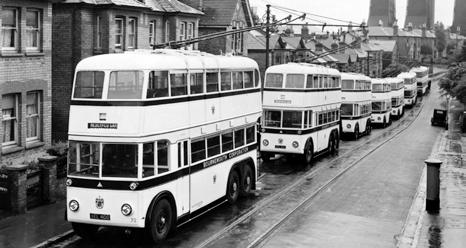
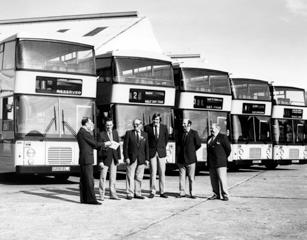


The men and women who worked for ‘The Yellows’
We must never forget that the most important asset of any company is the staff, and photographs in the montage depicted them standing in front of an early motorbus and several decades later during the official ‘launch’ of a fleet of five coach specification double deckers in 1986. It is fitting that the latter photo shows David Chalk, who was then Traffic Superintendent. David worked for the company for 44 years (1956 to 2000), becoming an acknowledged expert on its history and the author of books and many articles on the subject.
Livery changes
The original livery of primrose yellow and maroon was altered to primrose and azure blue in 1990. For the Centenary of the Borough in 1990, two double deck buses were painted in a special celebratory livery. Yellow Buses broadened their reach in the 90’s. Several coach companies were acquired between 1992 and 2000 offering residents more opportunities to travel beyond the Bournemouth & Christchurch conurbation. From 1 May 2017, six new double-deckers, the most environmentally friendly diesel vehicles on the road, went into service. The British-built Alexander Dennis MMC (Major Model Change) E400 vehicles have ultra-low carbon Euro 6 engines and the latest stop-start technology, which along with their lighter weight helps to reduce emissions, noise and fuel usage. Other features of the £1.3 million fleet include leather seats and tinted glass, USB chargers for all seats, audio and visual ‘next stop’ announcements, extra space for buggies and shopping trolleys and easier to read front destination displays. The buses also have full internal and external CCTV and Real-Time tracking which links to the journey planner on Yellow Buses’ app and website.
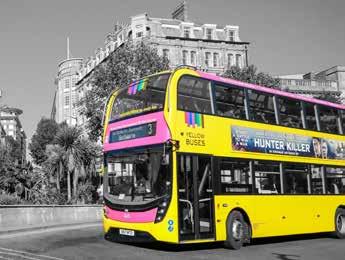
All except one of the tram fleet were open top ‘cars’. Two open top buses ran from 1914 to 1926 on ordinary all the year bus routes. In 1952, some wartime buses were converted to open top for pleasure services. After an absence of several years, the iconic open top bus operation returned during the Summer of 2017 and has continued, with extended seasons for each summer since. The open top service is now branded as ‘Buster’s Beach Bus’, based on the company mascot Buster Bear. There is also the equally popular ‘Buster’s New Forest Explorer’. From 2017 to 2019, a bus rally was held in Kings Park during the summer, with many examples of the current fleet and preserved former vehicles, some of which operated over former routes. These rallies have proved very popular, hence its return this year.
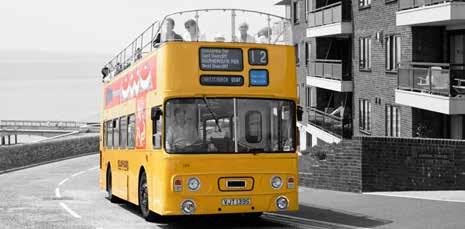
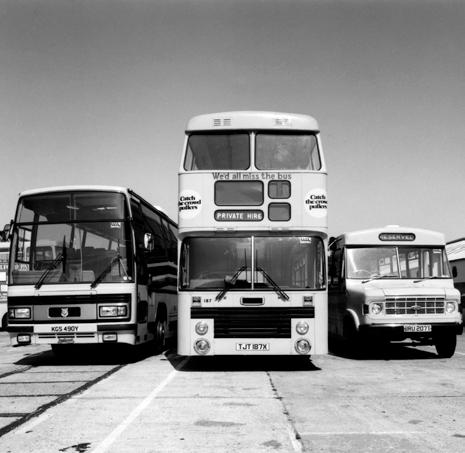


Management buyout
During its history, Yellow Buses has a variety of different owners but On 2nd July 2019, it was officially announced that the company had been sold to the management team of David Squire (Managing Director), Phil Pannell (Service Delivery Director) and Simon Newport (Commercial Director).
Over recent years, Yellow Buses has introduced themed buses dedicated to artwork, poetry, wildlife and the history of the company. These buses are decorated inside with impressive artwork and photographs. The company has always been very much a part of the local community and other special liveries include, those for a local radio station, ‘Thank you NHS’, the annual ‘Bournemouth 7s’ Festival, Christchurch BID, Bournemouth pantomimes, BAHA (BH Area Hospitality Association) and ‘Destination Management Board’ awards. For 2022, a bus jointly commemorating their 120th Anniversary and advertising Bobby’s in the Square has been commissioned.
Themed buses
Yellow Buses introduced a service linking Poole, Bournemouth and Christchurch over a century ago, in 1905, using open-top trams with wooden seats. Today they are still operating the same through route, but of course, it is now faster and uses modern luxury buses with leather seats and USB ports to charge mobile phones!
The company celebrate its 120th birthday at virtually the same time as HM the Queen’s Platinum Jubilee. 2022 is a very significant year for Her Majesty but also a very significant year for Yellow Buses. Let’s hope we can look forward to many more years of ‘The Yellows’ serving the Bournemouth, Christchurch and Poole areas, as well as further afield with their coaching operations.
With grateful thanks to David Chalk. By Dave Symes, Fleet Engineering Systems Analyst, Bournemouth Transport Limited.







